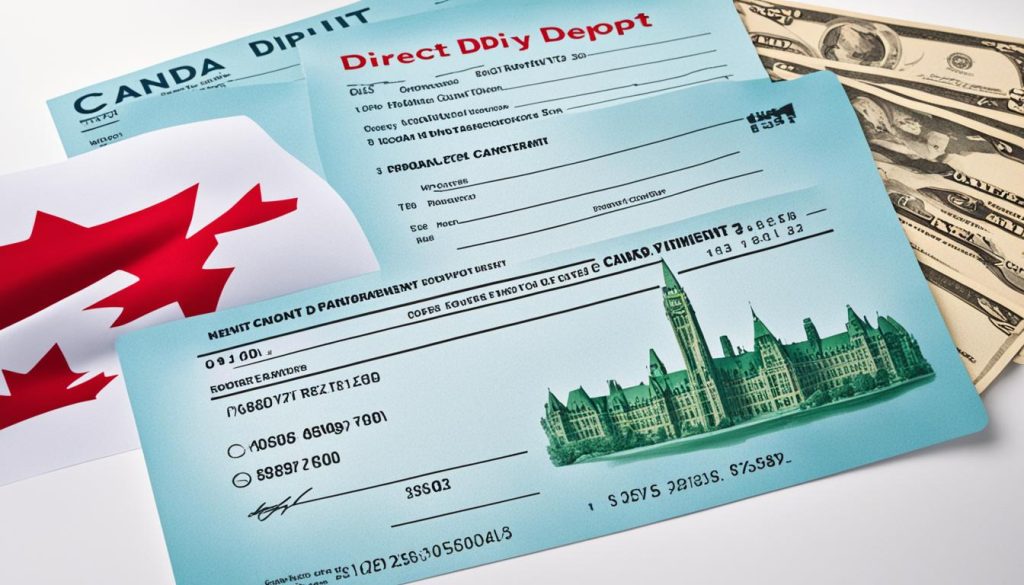Have you ever wondered what is Canada RIT and how it can benefit you? If you’re someone who finds taxes overwhelming or is looking for ways to save money, then you’re in the right place. In this article, we will explore the Canada RIT program, answering questions such as “What is Canada RIT?”, “Is RIT too expensive?”, and “How often do you get Canada RIT?”. By the end of this article, you’ll have a better understanding of this beneficial tax program and how it can potentially help you save money. So, let’s dive in and explore the world of Canada RIT!
Understanding the Canada RIT Deposit
The Canada RIT deposit refers to a tax refund that individuals receive from the Canada Revenue Agency (CRA) after filing their income tax return. The RIT in the term stands for Refund Income Tax, and the deposit is a cash refund provided to eligible individuals for various tax credits, deductions, and overpayments.
Definition of Canada RIT
The Canada RIT deposit is a tax refund that individuals receive from the CRA. It is a way for the CRA to reconcile an individual’s tax account and provide them with a refund if they have paid more in taxes than they owed.
Purpose of the RIT Deposit
The purpose of the RIT deposit is to ensure that individuals have not overpaid or double-paid their taxes during the previous tax year. The deposit is a way for the CRA to adjust an individual’s tax account and provide them with a refund if they have paid more than they owed.

Scenarios That Trigger a Canada RIT Deposit
There are several scenarios that can lead to a Canada RIT deposit. The most common is a
1. Tax reassessment by the CRA
In this case, the Canada Revenue Agency reviews an individual’s tax return and identifies discrepancies that work in the taxpayer’s favour, resulting in a refund.
2. Over-withholding by employers
When employers deduct income taxes at a higher rate than necessary, the excess amount can be reclaimed through the RIT deposit.
3. Unclaimed deductions and credits
Such as the Canada Workers Benefit or the Ontario Trillium Benefit. When the CRA adjusts the tax return to account for these overlooked credits, the RIT deposit is used to provide the refund.
By understanding these various scenarios, Canadians can better anticipate and prepare for the possibility of receiving a Canada RIT deposit, which can provide a welcome financial boost and help optimize their tax situation.
Eligibility for the Canada RIT Deposit
Any individual or small business that files an accurate and complete Canadian tax return may be eligible for a Canada RIT deposit. The deposit is triggered when an individual’s tax liability is less than the payments they have already made, resulting in an overpayment. The Canada Revenue Agency (CRA) will then issue a RIT deposit to refund the overpayment. Eligibility for the RIT deposit is determined by the CRA’s assessment of an individual’s tax return and their overall tax situation.
To qualify for the Canada RIT deposit, individuals must meet the following criteria:
- Be a Canadian resident for tax purposes
- Have filed a complete and accurate income tax return
- Have overpaid their taxes during the previous tax year
- Not owe any outstanding debts to the government
Small businesses may also be eligible for the Canada RIT deposit if they have overpaid their taxes and met the necessary filing requirements. The CRA will review the business’s tax return and issue a deposit if an overpayment is identified.

It’s important to note that the eligibility for the Canada RIT deposit can vary based on individual circumstances. Individuals and small businesses are encouraged to review their tax situation with the CRA or a qualified tax professional to ensure they are maximizing their potential tax refunds and credits.
What Is Canada RIT?
The abbreviation RIT in “Canada RIT” stands for Refund Income Tax. This refers to the tax refund that individuals receive from the Canada Revenue Agency (CRA) after filing their income tax returns. The Canada RIT deposit is directly connected to an individual’s income tax return and is a way for the CRA to reconcile any overpayments or credits that the individual may be entitled to. The RIT deposit is a crucial part of the income tax filing process, as it ensures that individuals are not paying more in taxes than they owe.
Meaning of the Abbreviation RIT
The abbreviation RIT stands for Refund Income Tax, which is the tax refund that individuals receive from the Canada Revenue Agency (CRA) after filing their income tax return. This refund is a way for the CRA to reconcile any overpayments or credits that the individual may be entitled to, ensuring that they are not paying more in taxes than they owe.
Connection to Income Tax Returns
The Canada RIT deposit is directly linked to an individual’s income tax return. It is a way for the Canada Revenue Agency (CRA) to reconcile any overpayments or credits that the individual may be entitled to, ensuring that they are not paying more in taxes than they owe. The RIT deposit is a crucial part of the income tax filing process, as it helps individuals manage their tax obligations and maximize their tax refunds.

Receiving Your Canada RIT Deposit
When it comes to receiving your Canada RIT deposit, you have two options: direct deposit or cheque. Understanding the differences between these methods can help you choose the best option for your circumstances.
Direct Deposit vs. Cheque
Direct deposit is generally the faster and more convenient option for receiving your Canada RIT deposit. With direct deposit, the funds are immediately available in your bank account, eliminating the need to wait for a cheque to arrive in the mail. This can be especially beneficial if you need to access the funds quickly to pay bills or address other financial obligations.
Alternatively, you can request a cheque from the Canada Revenue Agency (CRA). The cheque will be mailed to the address on file with the CRA. While this option may take longer to receive the funds, it can be preferred by individuals who do not have a bank account or who prefer to have a physical record of the transaction.
Setting Up Direct Deposit
To set up direct deposit for your Canada RIT deposit, you can log into your CRA account and provide your banking information. This process typically takes a few minutes and can be done online, making it a convenient option for many taxpayers. By setting up direct deposit, you can ensure that your refund is deposited directly into your bank account, allowing you to access the funds more quickly and efficiently.
Regardless of whether you choose direct deposit or a cheque, the timing of your Canada RIT deposit will depend on the method you select. Direct deposit is generally processed more quickly than a cheque, so if you need the funds sooner, opting for direct deposit may be the better choice.

Timing of the RIT Deposit
The timing of the Canada RIT deposit can vary depending on several factors. The CRA’s processing time is a significant factor, as the agency needs to review and assess the individual’s tax return before issuing the refund. If the tax return is relatively simple, the deposit may be received shortly after filing. However, if the return is more complex or if the individual owes any debts to the government, the processing time may be longer.
CRA Processing Time
The CRA’s processing time is a crucial element that determines when the Canada RIT deposit will be received. The agency needs to thoroughly review and assess each individual’s tax return to ensure accuracy and compliance with the Canadian income tax regulations. This process can take several weeks or even months, depending on the complexity of the return and the volume of submissions the CRA is currently processing.
Factors Affecting Deposit Timing
In addition to the CRA’s processing time, there are other factors that can influence the timing of the Canada RIT deposit. Whether the individual filed their tax return online or by paper can impact the processing time, with electronic filings generally being processed more quickly. Additionally, if the individual has set up direct deposit with the CRA, the deposit may be received sooner than if a cheque is mailed.
| Factor | Impact on Deposit Timing |
|---|---|
| Tax Return Complexity | Simple returns may be processed faster, while complex returns may take longer. |
| Filing Method | Electronic filings are typically processed more quickly than paper returns. |
| Direct Deposit vs. Cheque | Direct deposit allows for faster receipt of the RIT deposit compared to a mailed cheque. |
| Outstanding Debts | If the individual owes any debts to the government, the CRA may withhold the RIT deposit until those obligations are met. |
By understanding the various factors that can impact the timing of the Canada RIT deposit, individuals can better plan and manage their financial expectations and decision-making. Whether the deposit arrives within a few weeks or several months, it is a valuable tax refund that can be put to good use in achieving personal financial goals.
Understanding the Canada RIF Terminology
The terms “Canada RIT” and “Canada RIF” are often used interchangeably, as they both refer to a tax refund or credit issued by the Canada Revenue Agency (CRA). The abbreviation “RIT” stands for Refund Income Tax, while “RIF” stands for Refundable Investment Tax. In most cases, individuals will see “RIT/RIF” or “Canada RIT” on their bank statements, indicating the same type of deposit.
However, if an individual is also claiming retirement income, they may see the “RIF” abbreviation on its own, which could refer to a Registered Income Fund. This distinction is important to understand, as the “RIF” in this context is related to the individual’s retirement income, rather than a general tax refund.
It’s crucial for Canadian taxpayers to familiarize themselves with the terminology used by the CRA, as this can help them better navigate the income tax filing process and ensure they are properly claiming all eligible credits, deductions, and refunds. By understanding the differences between Canada RIT and Canada RIF, individuals can make more informed decisions about managing their tax affairs and maximizing their financial well-being.
Managing Your Canada RIT Deposit
Once individuals receive their Canada RIT deposit, they have several options to effectively manage these funds. One recommendation is to use the deposit to reduce high-interest debt, such as credit card balances or personal loans. This can result in significant savings over time by lowering interest payments and improving your overall financial well-being.
Reducing High-Interest Debt
By prioritizing the repayment of high-interest debt with your Canada RIT deposit, you can free up future income and reduce the interest charges you would have otherwise incurred. This strategy can be particularly beneficial for individuals carrying balances on credit cards or personal loans with APRs of 15% or higher. Paying down these debts can provide long-term financial relief and put you on a path towards better financial health.
Building an Emergency Fund
Another prudent use of your Canada RIT deposit is to contribute to or establish an emergency fund. Having a readily accessible savings account with enough funds to cover unexpected expenses, such as medical bills, car repairs, or job loss, can provide invaluable financial stability. Experts recommend aiming for an emergency fund that can cover three to six months’ worth of essential living expenses, and your RIT deposit can be a valuable starting point or addition to this important financial safeguard.
Investing in Tax-Advantaged Accounts
Lastly, individuals can consider investing their Canada RIT deposit in tax-advantaged accounts, such as a Registered Retirement Savings Plan (RRSP) or a Tax-Free Savings Account (TFSA). These investment vehicles offer the potential for long-term growth while providing tax benefits, allowing you to optimize your financial planning and future tax situation. By contributing to these accounts, you can take advantage of compound interest and enjoy the flexibility of withdrawing funds when needed, further strengthening your overall financial resilience.
Conclusion
In conclusion, the Canada RIT deposit is a beneficial tax program that provides a cash refund to eligible individuals for various tax credits, deductions, and overpayments. The deposit can be triggered by a tax reassessment, over-withholding by employers, or unclaimed deductions and credits. Eligible individuals can receive the RIT deposit once a year, either through direct deposit or cheque, with the timing dependent on factors such as the complexity of the tax return and the Canada Revenue Agency’s (CRA) processing time.
By understanding the purpose and management of the Canada RIT deposit, individuals can optimize their financial well-being and make informed decisions about how to best utilize this unexpected windfall. Whether using the funds to reduce high-interest debt, build an emergency fund, or invest in tax-advantaged accounts, the Canada RIT deposit can be a valuable tool in an individual’s overall financial strategy.
Overall, the Canada RIT deposit is a valuable program offered by the CRA, providing eligible Canadians with a tax refund that can have a significant impact on their financial security and long-term planning. By staying informed and proactive about this tax benefit, individuals can ensure they are maximizing the potential of the RIT deposit and taking full advantage of the opportunities it presents.
FAQ
1. What is Canada RIT?
Canada RIT refers to the Refundable Investment Tax Credit, a beneficial tax program that provides a cash refund to individuals for eligible investment expenses.
2. What is the purpose of the RIT deposit?
The purpose of the RIT deposit is to ensure that individuals have not overpaid or double-paid their taxes during the previous tax year. The deposit is a way for the Canada Revenue Agency (CRA) to reconcile an individual’s tax account and provide them with a refund if they have paid more than they owed.
3. What scenarios can trigger a Canada RIT deposit?
The most common scenarios that can trigger a Canada RIT deposit include tax reassessment by the CRA, over-withholding by employers, and unclaimed deductions and credits.
4. Who is eligible for the Canada RIT deposit?
Any individual or small business that files an accurate and complete Canadian tax return may be eligible for a Canada RIT deposit. The deposit is triggered when an individual’s tax liability is less than the payments they have already made, resulting in an overpayment.
5. What does the abbreviation RIT stand for?
The abbreviation RIT in “Canada RIT” stands for Refund Income Tax. This refers to the tax refund that individuals receive from the Canada Revenue Agency (CRA) after filing their income tax returns.
6. How can I receive the Canada RIT deposit?
Individuals have the option to receive their Canada RIT deposit either through direct deposit or by cheque. Direct deposit is generally faster and more convenient, as the funds are immediately available in the individual’s bank account.
7. When can I expect to receive the Canada RIT deposit?
The timing of the Canada RIT deposit can vary depending on several factors, such as the CRA’s processing time, the complexity of the tax return, and whether the individual filed their taxes online or by paper.
8. What is the difference between Canada RIT and Canada RIF?
The terms “Canada RIT” and “Canada RIF” are often used interchangeably, as they both refer to a tax refund or credit issued by the Canada Revenue Agency (CRA). The abbreviation “RIT” stands for Refund Income Tax, while “RIF” stands for Refundable Investment Tax.




